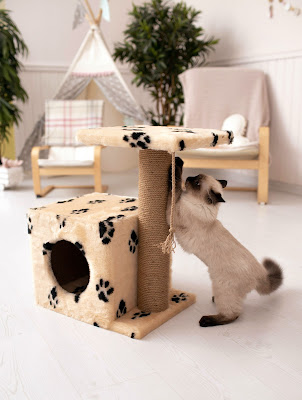With expert insights from Dr Claire Jenkins, founder of VetChat and Breeder’s Choice Vet Ambassador, the campaign tackles everything from diet and hydration to joint care and skin comfort.
Here’s what every cat owner should know this winter.
1. Not All Cats Need Extra Calories in Winter – But Some Do
You might notice your cat eating more during winter, or perhaps sleeping longer and moving less. According to Dr Jenkins, both scenarios are normal and both require different approaches.
“Cats may burn fewer calories in winter if they’re less active, but they also need energy to stay warm,” she says. “It’s not about feeding more or less across the board. It’s about monitoring your cat’s behaviour and adjusting as needed.”
Start by watching your cat’s weight and body condition. If they seem to be gaining, it might be time to cut back slightly on portions or treats. On the other hand, cats that become more active in the cold, especially those with outdoor access, may need a little more fuel. Focus on quality over quantity, choosing high-protein, balanced diets and functional treats that support health without excess kilojoules.
Serving food during warmer parts of the day or lightly warming wet food can also boost appetite, especially for older or fussier felines
2. Hydration Still Matters in the Cold
It’s easy to forget water intake when it’s not hot outside, but hydration plays a key role in your cat’s overall health, especially kidney function and digestion.
“Many cats drink less in winter, particularly if they’re eating more dry food,” says Dr Jenkins. “Adding water to meals or offering more wet food is a simple way to help maintain hydration.”
Regularly refresh water bowls, and consider using a pet fountain if your cat prefers running water. Keeping drinking stations away from draughts also makes them more appealing.
3. Watch for Weight Gain and Keep Cats Active
 |
| Whatever do you mean: 'not my chair'? |
Indoor cats are particularly prone to winter weight gain. Less daylight and fewer stimulating opportunities mean cats are more likely to nap than play, which can lead to increased body fat, poor muscle tone and long-term health risks.
“Even minor weight gain can strain a cat’s joints and organs,” says Dr Jenkins. “The good news is, small changes at home can make a big difference.”
Simple enrichment tools like puzzle feeders, lick mats or treat balls can turn mealtime into a workout. Climbing shelves or cat trees add vertical territory, encouraging movement and curiosity.
Aim for short bursts of play, even five minutes with a feather wand or laser pointer can support your cat’s physical and mental health.
4. Don’t Ignore Subtle Signs in Senior Cats
Older cats face additional challenges in winter. Cold weather can exacerbate stiffness and arthritis, particularly in indoor cats that spend time lying on hard floors or in draughty corners.
“Cats are masters at hiding pain,” says Dr Jenkins.
“If your senior cat is hesitant to jump, sleeping more than usual or grooming less, it could be a sign their joints are bothering them.”
To support ageing felines, Dr Jenkins recommends creating warm, easily accessible spaces using low-sided beds, soft blankets or heated mats. Small ramps or steps can help cats reach favourite perches without putting strain on their joints.
Weight management is also critical – less bulk means less pressure on sore spots.
And don’t wait until discomfort becomes obvious. Speak to your vet about joint supplements, diets or pain management options, especially if your cat is already showing signs of slowing down.
5. Keep Skin and Coats Healthy Indoors
Winter heating can lead to dry skin and static-prone fur, especially for short-haired breeds, indoor cats or seniors. You might notice more scratching, flaking or changes in coat texture.
“Just like us, cats can suffer from the effects of dry, heated air,” says Dr Jenkins. “A balanced diet rich in omega fatty acids helps from the inside out, but it’s also worth adjusting your home environment.”
Try to keep the heating moderate and avoid placing beds directly next to heaters. Let in fresh air when it is safe to do so, to improve ventilation and humidity levels.
Regular gentle grooming sessions with a soft brush can also help distribute natural oils and keep coats glossy.
Running through June and July, the Cosy Cat Project is more than just a seasonal campaign; it’s a timely reminder that small, thoughtful changes at home can make a lasting difference to your cat’s wellbeing.
Whether it’s adjusting meal portions, setting up a warm, draught-free snoozing spot, or spotting subtle signs of discomfort before they escalate, winter care is all about being in tune with your cat’s needs.
And with a bit of support, even the sleepiest feline can thrive through the colder months.
As Dr Jenkins puts it, “Winter care isn’t about overhauling your routine – it’s about paying attention.”
“The more we understand our cats’ habits, the better we can support them through the seasons.”
Follow the Cosy Cat Project @breederschoicecats for more winter wellbeing tips.
Written by Amanda Kuhn, June 2025 for Breeder’s Choice.
Disclaimer: This article is intended as general advice only. Always consult your veterinarian for personalised recommendations based on your cat’s individual health, age and lifestyle.
Related Stories:











































